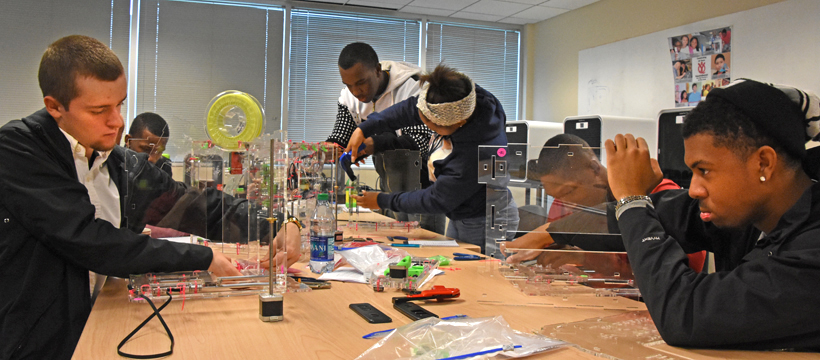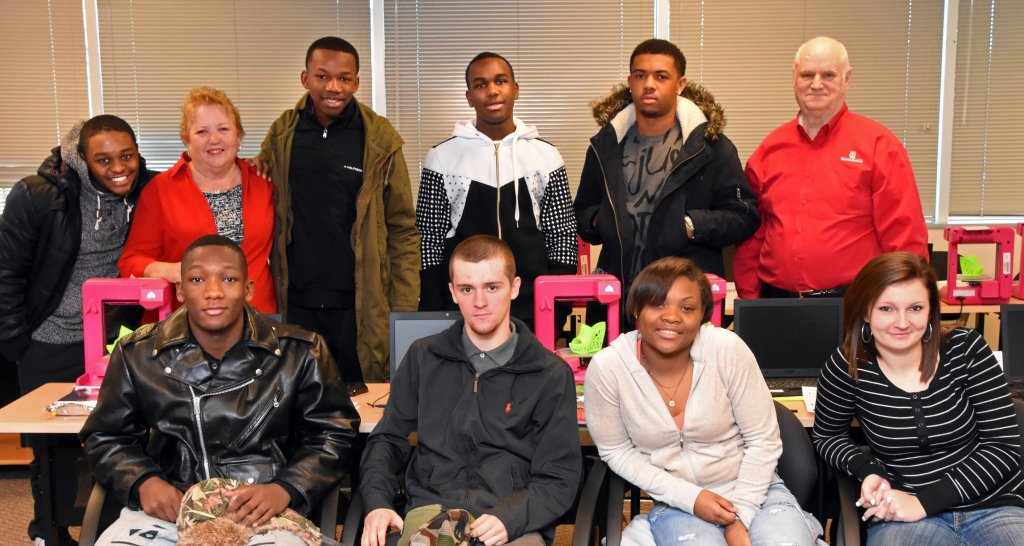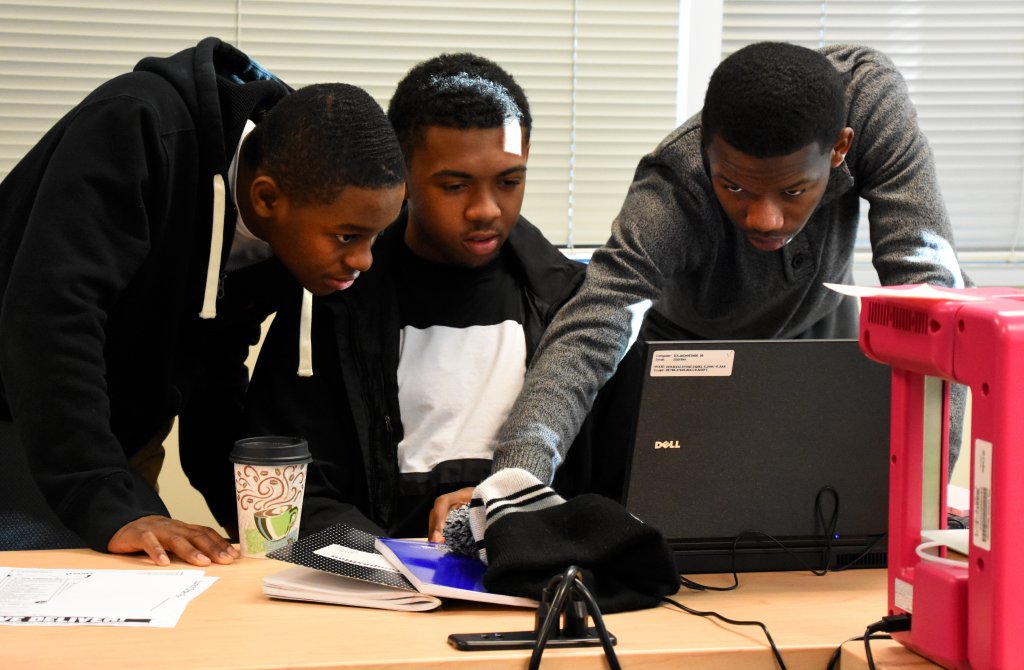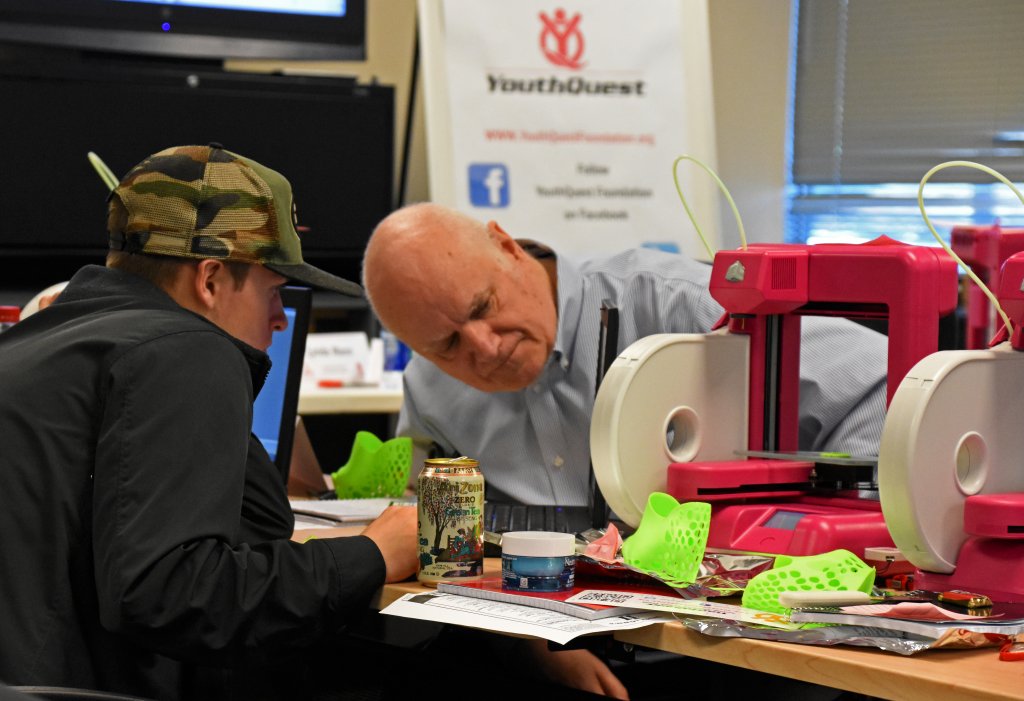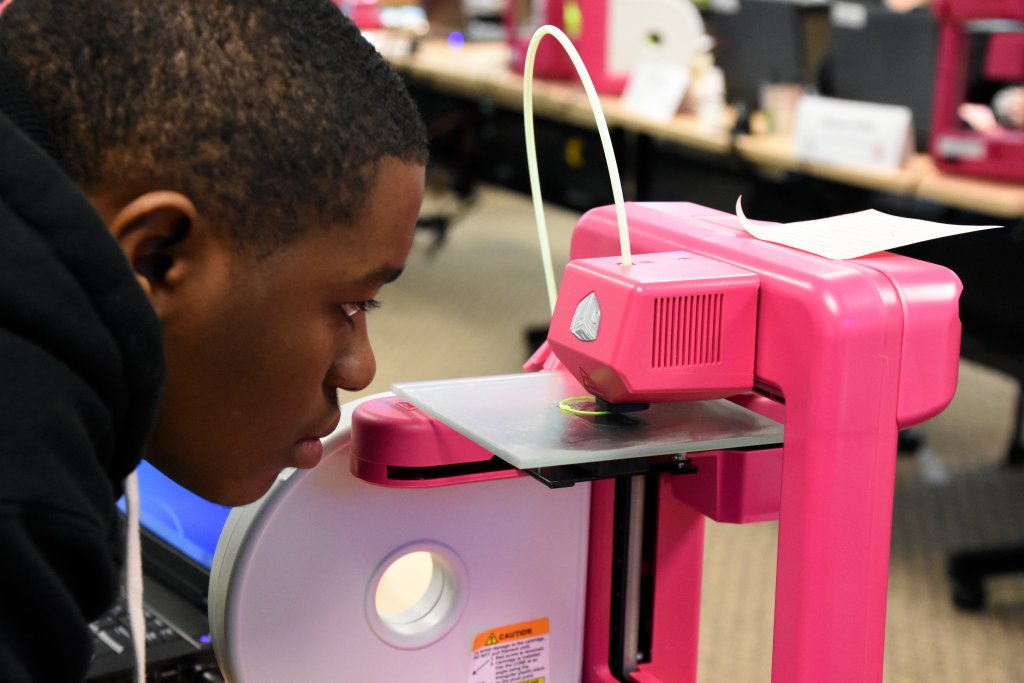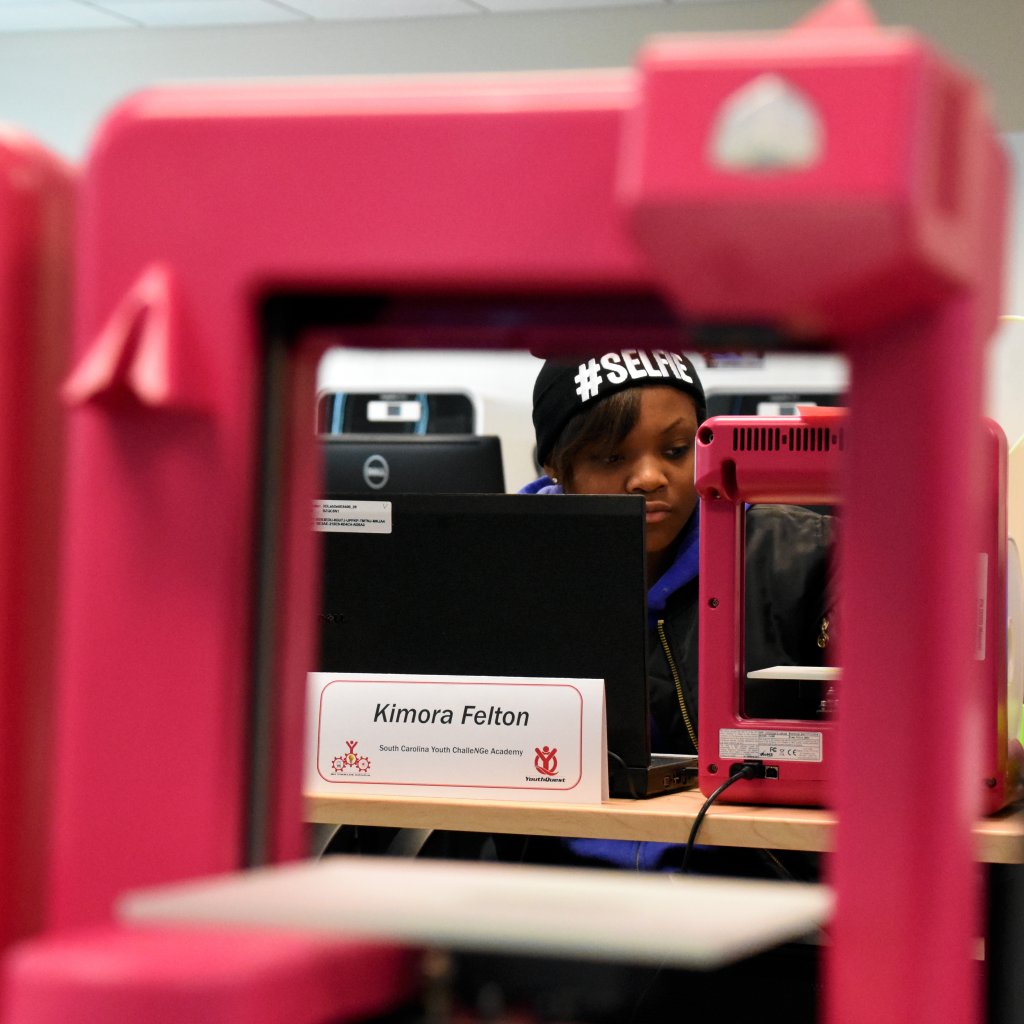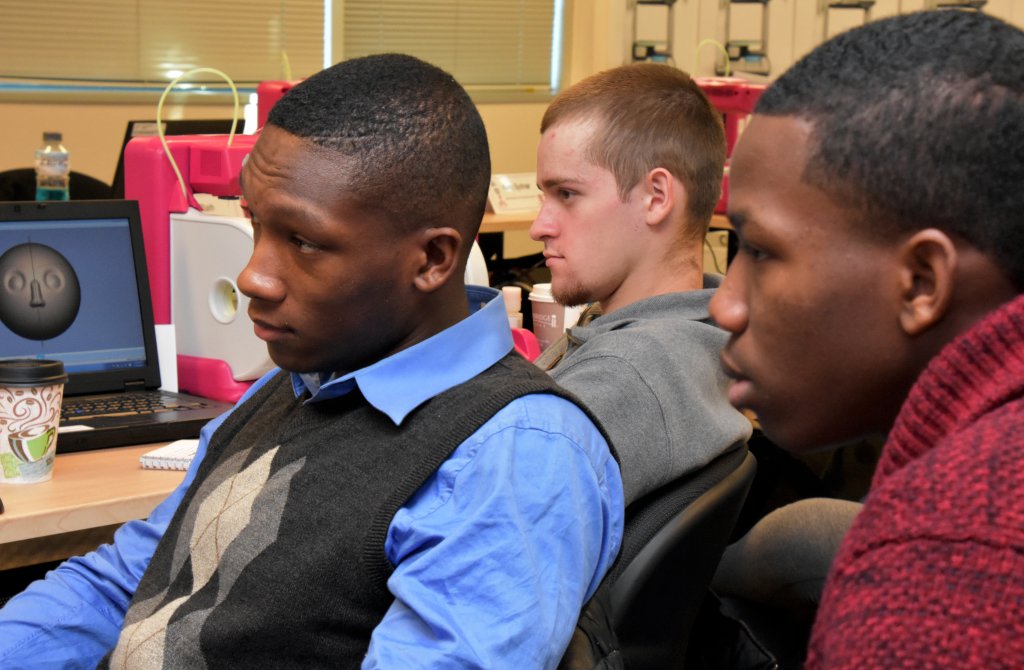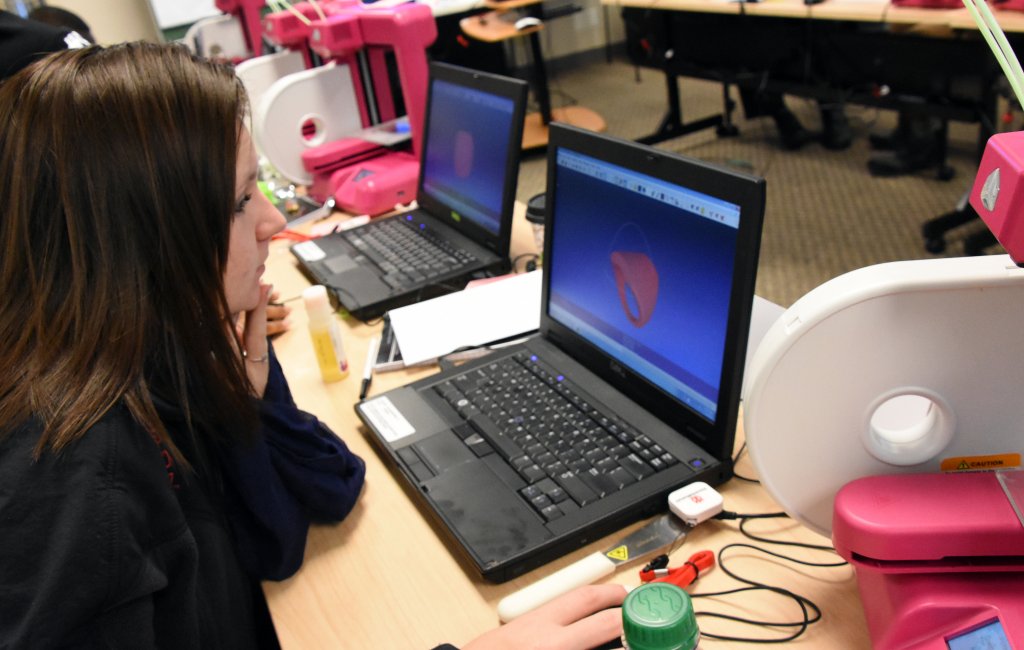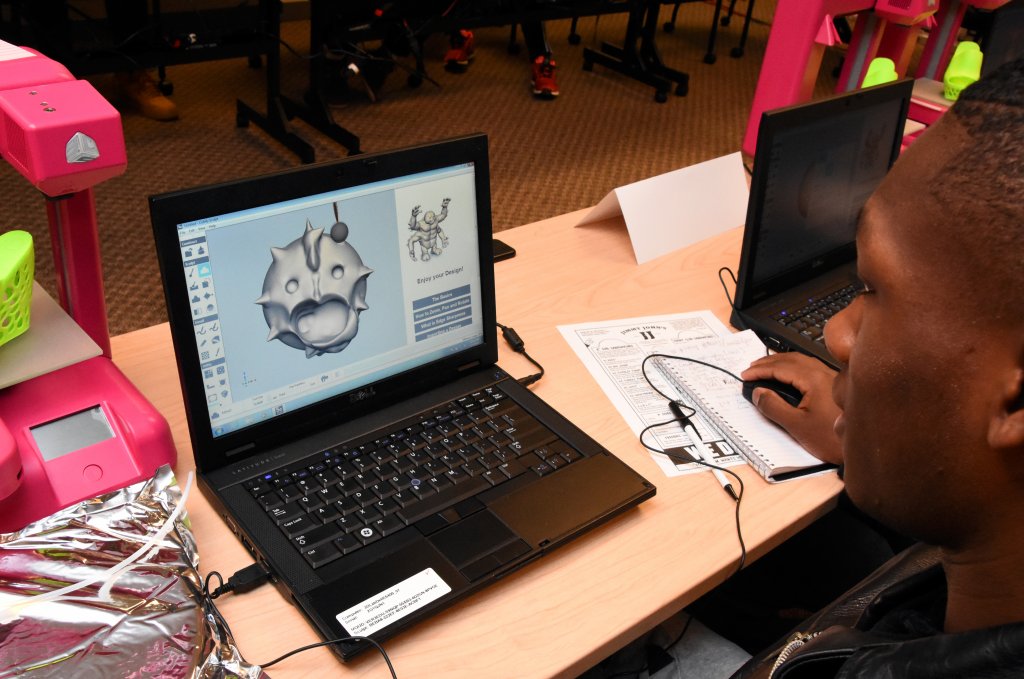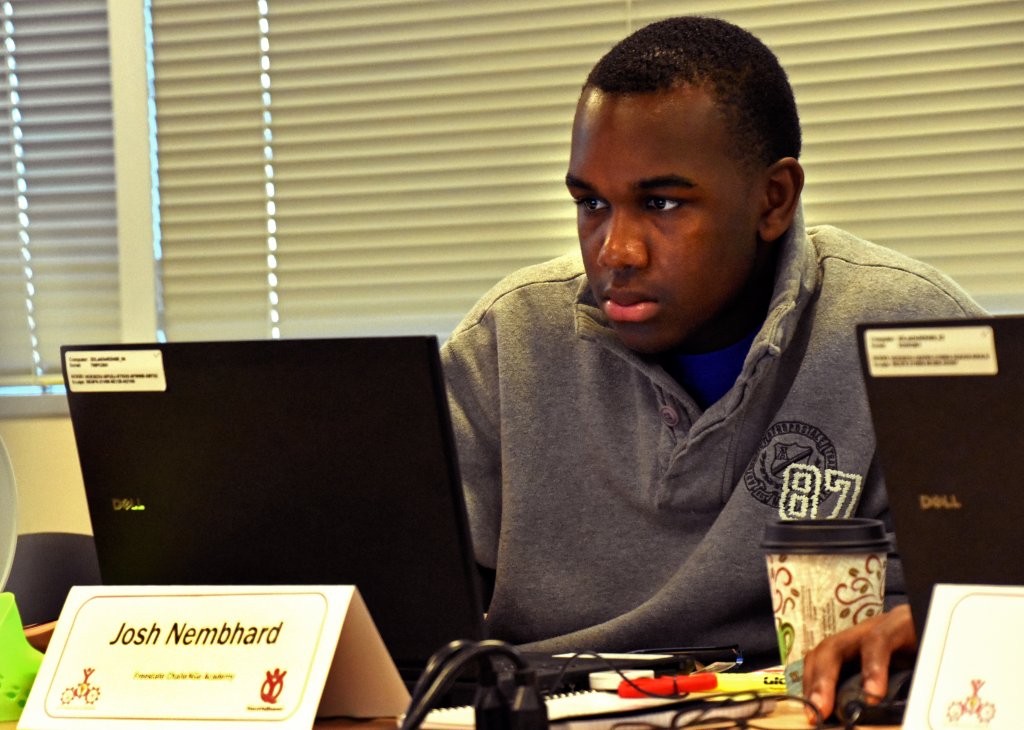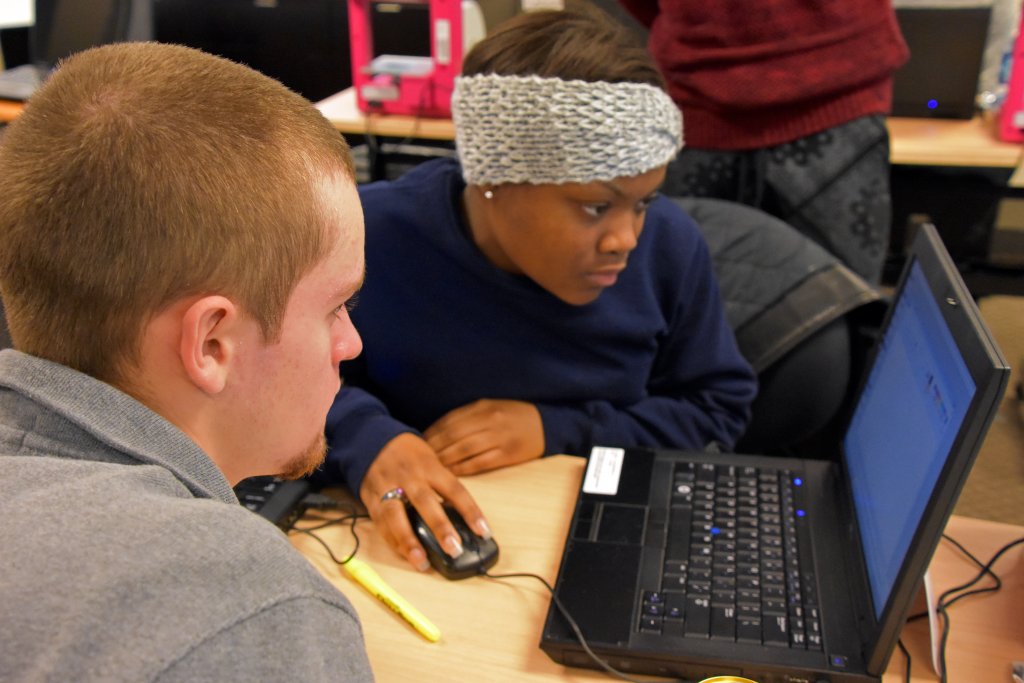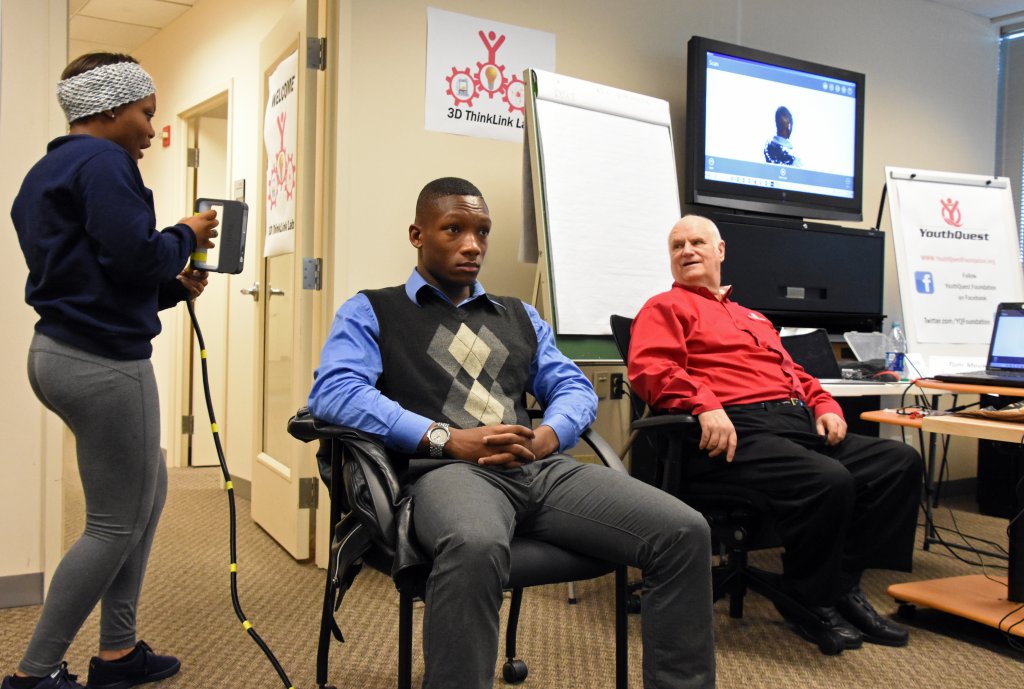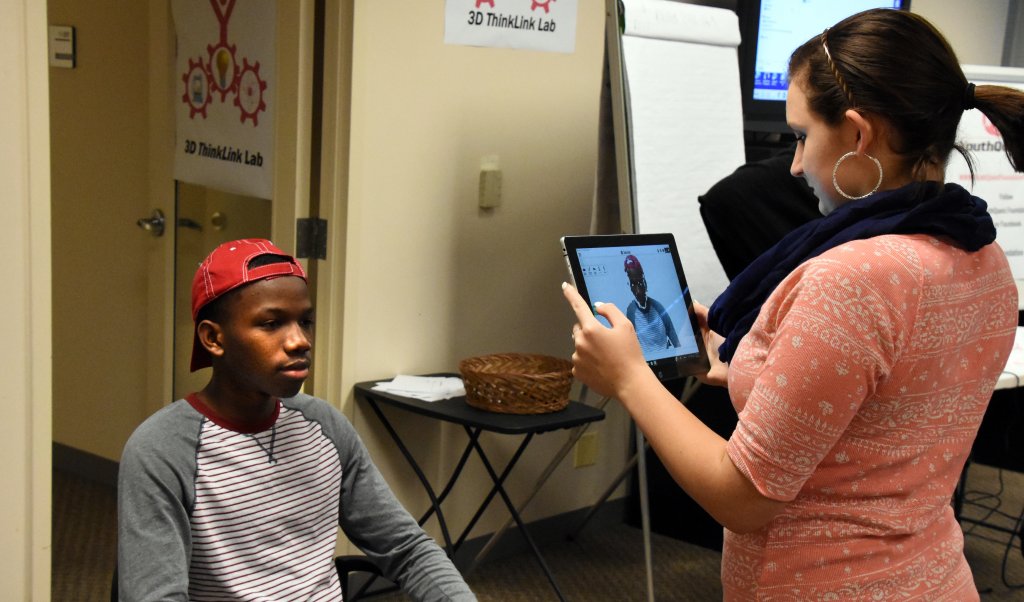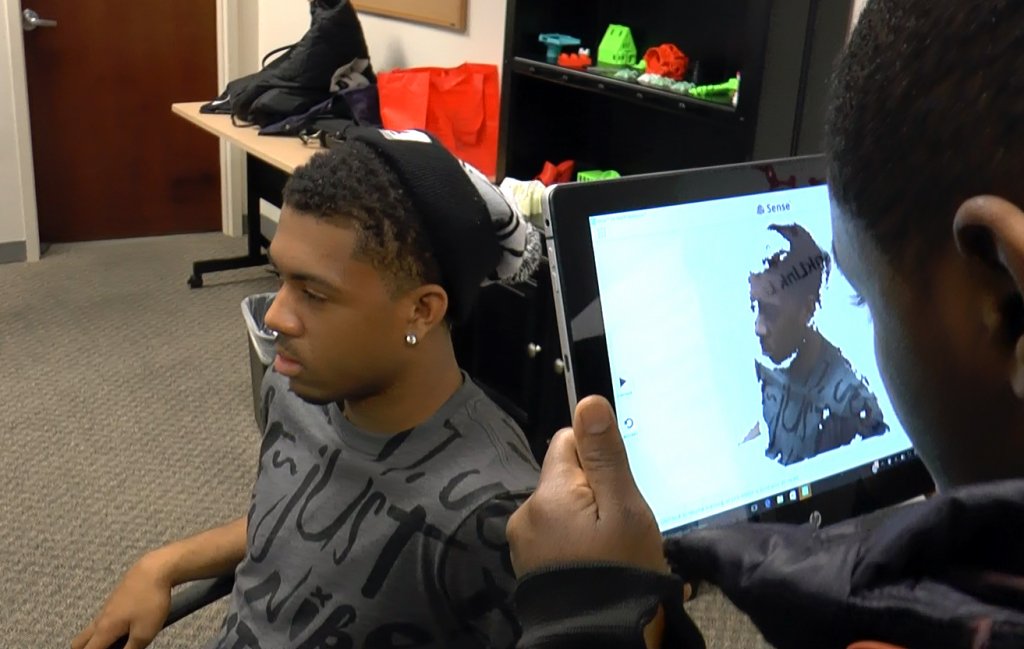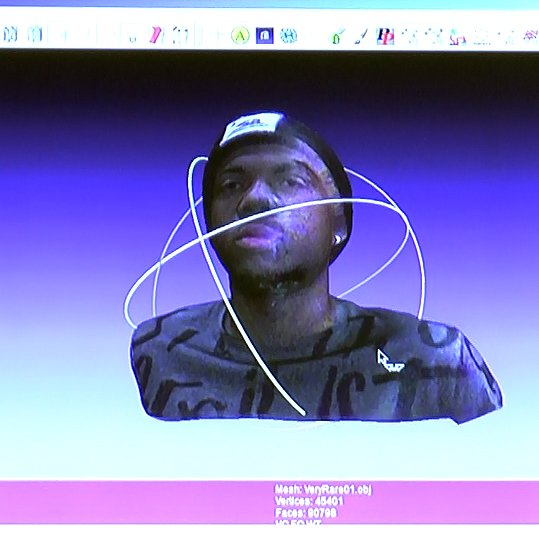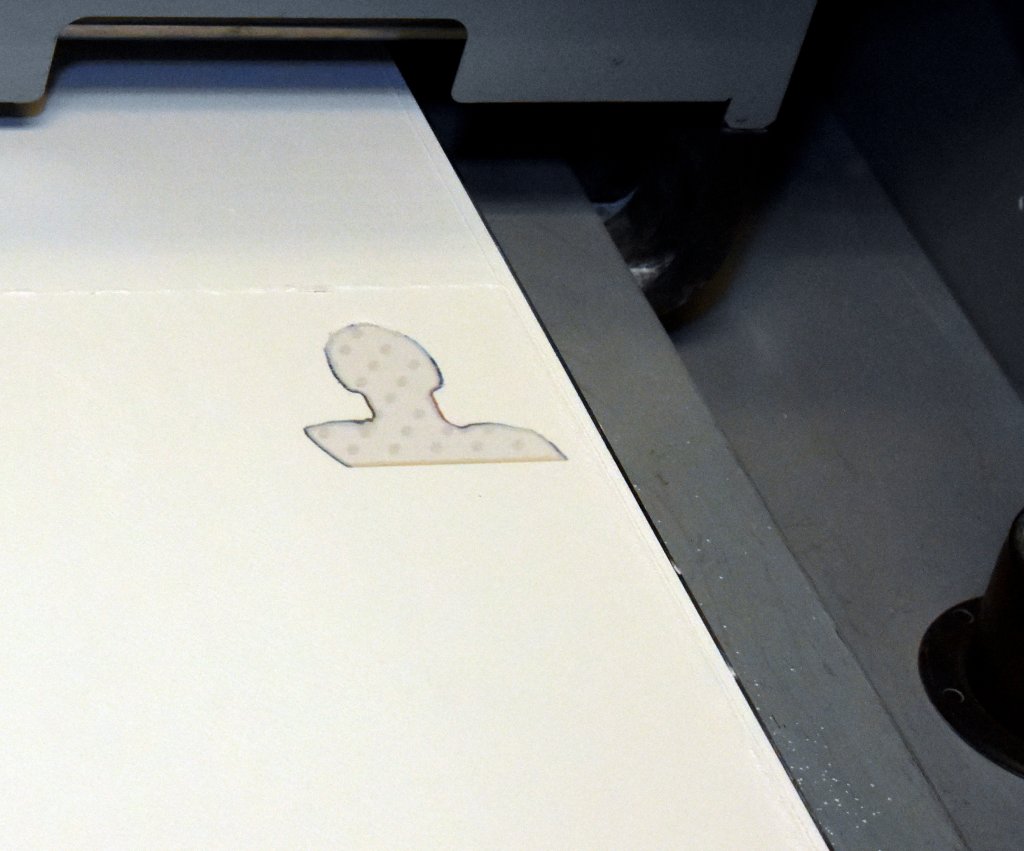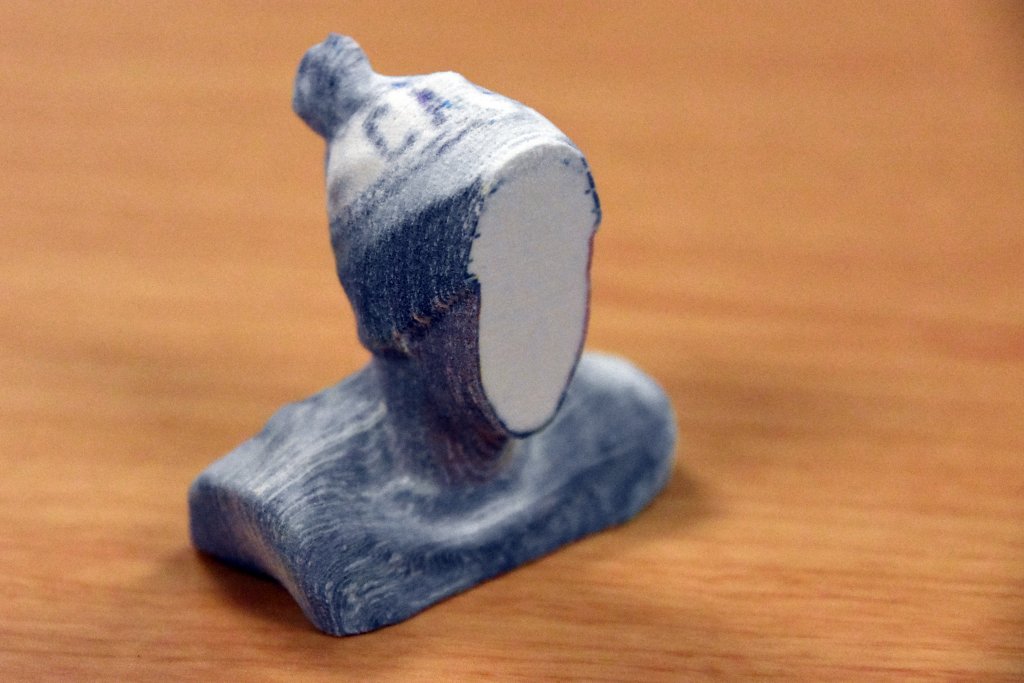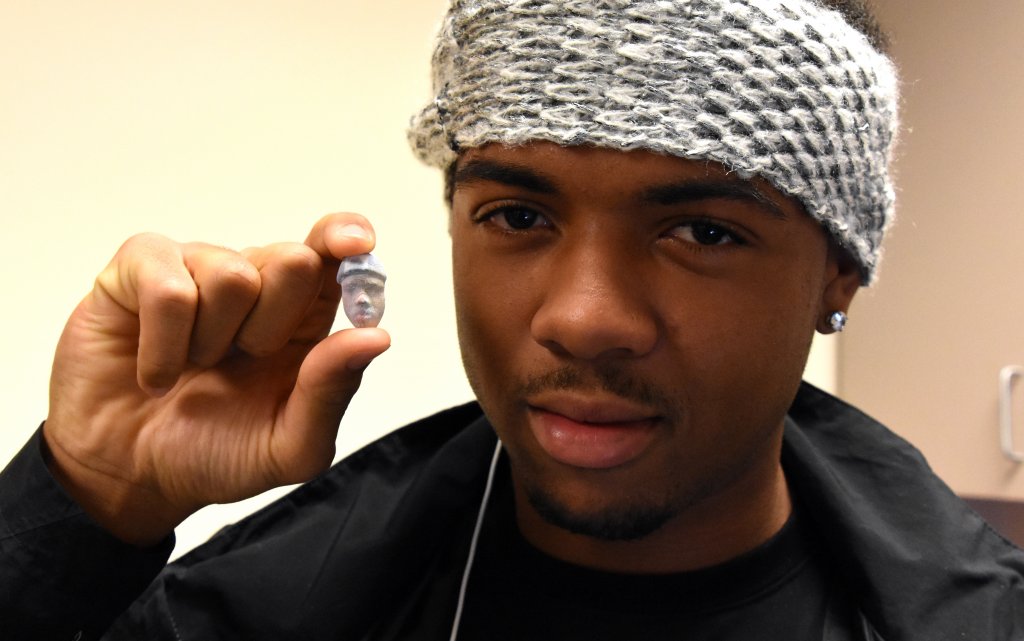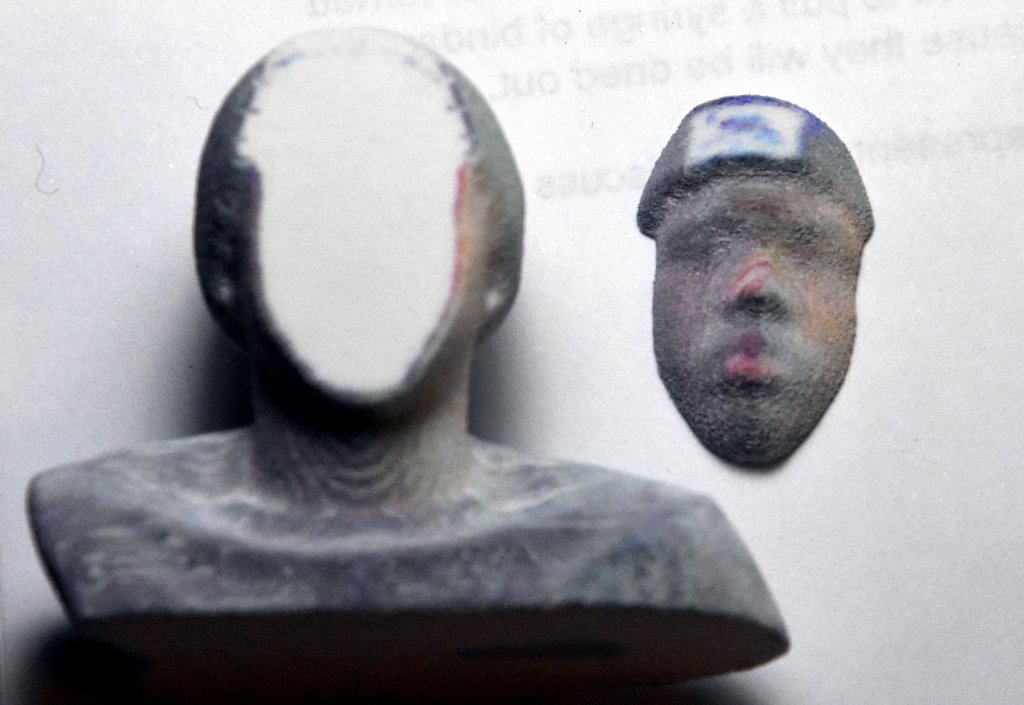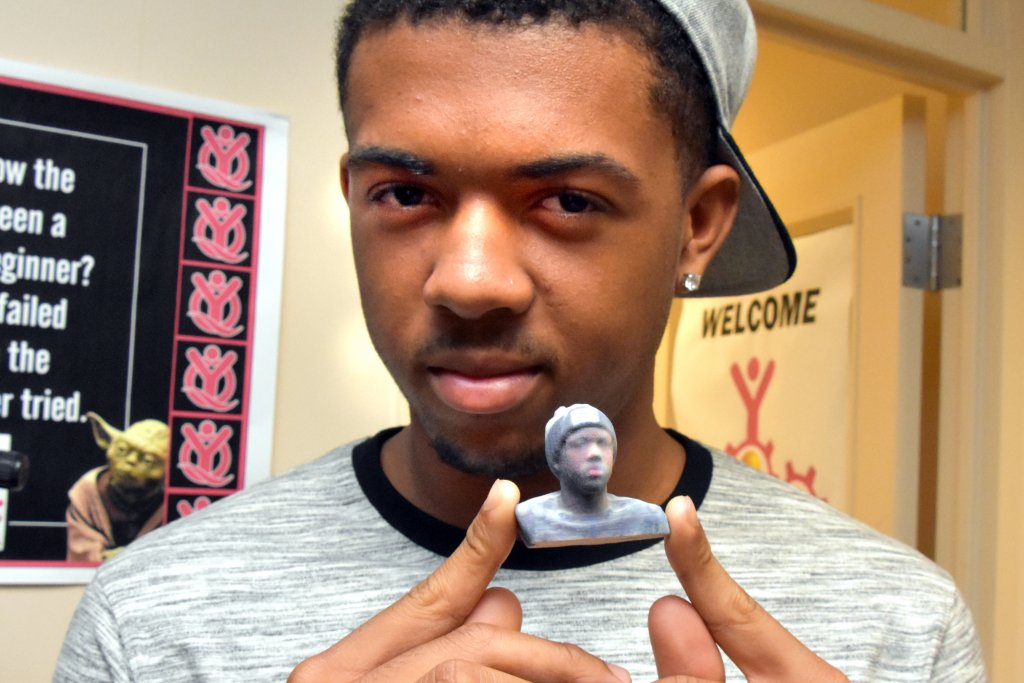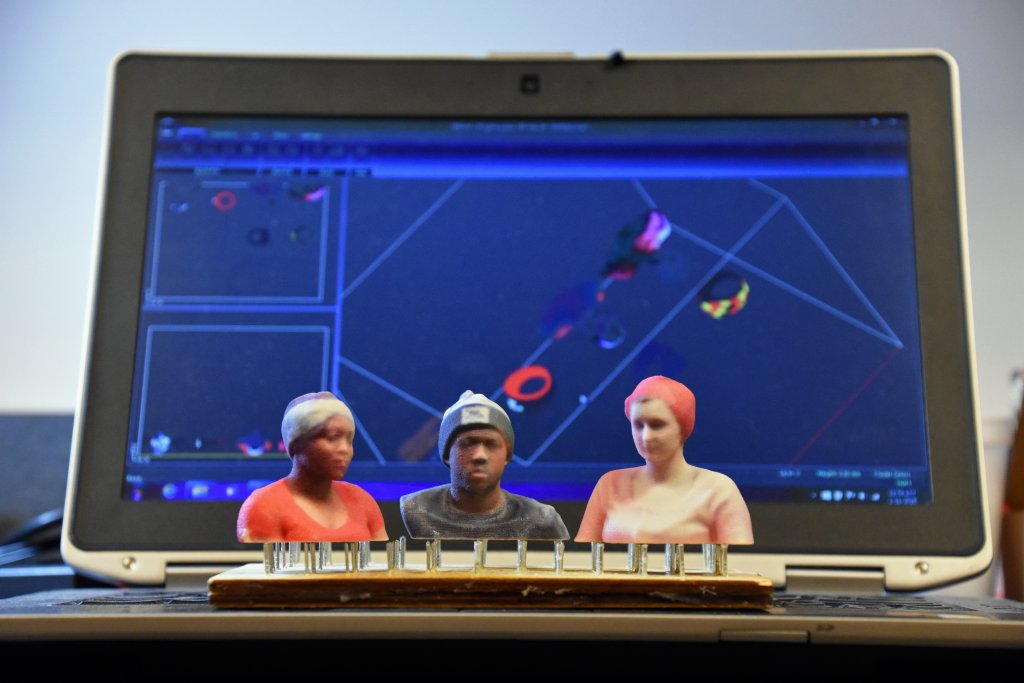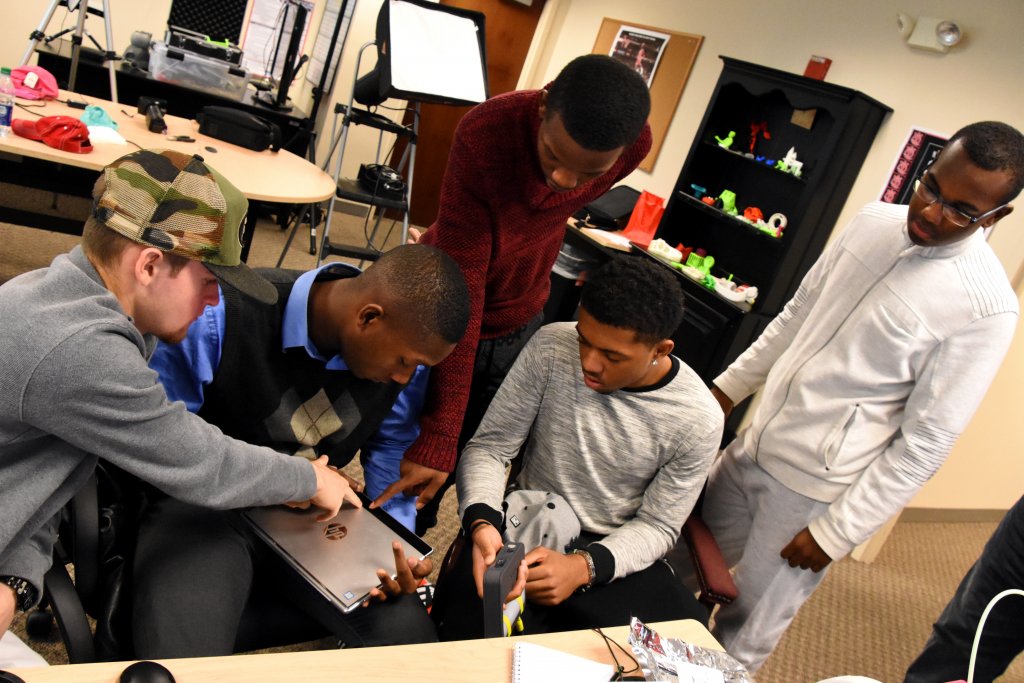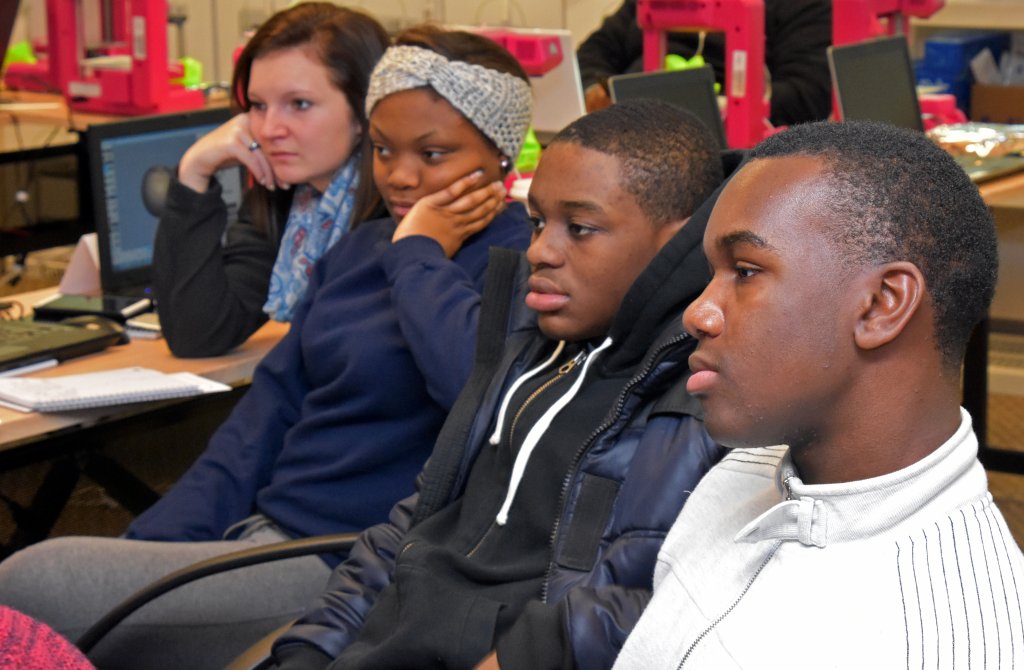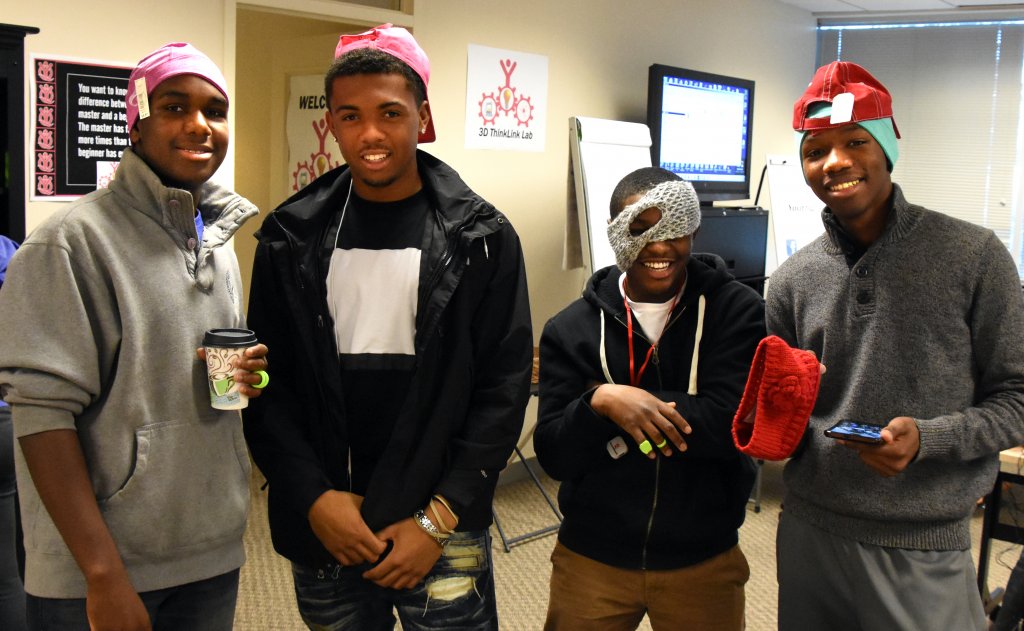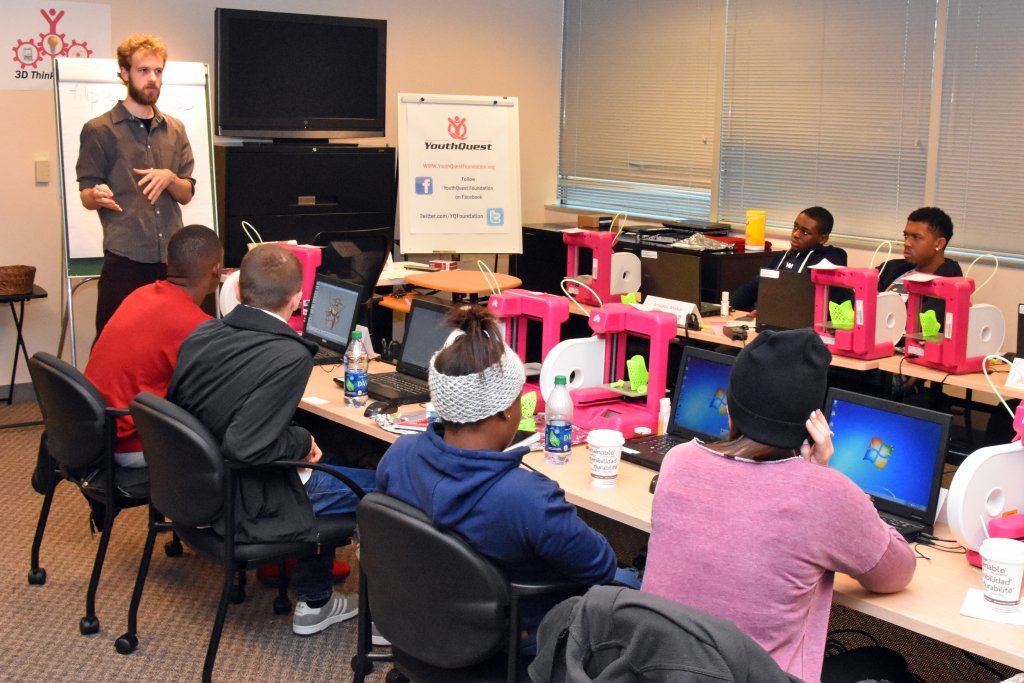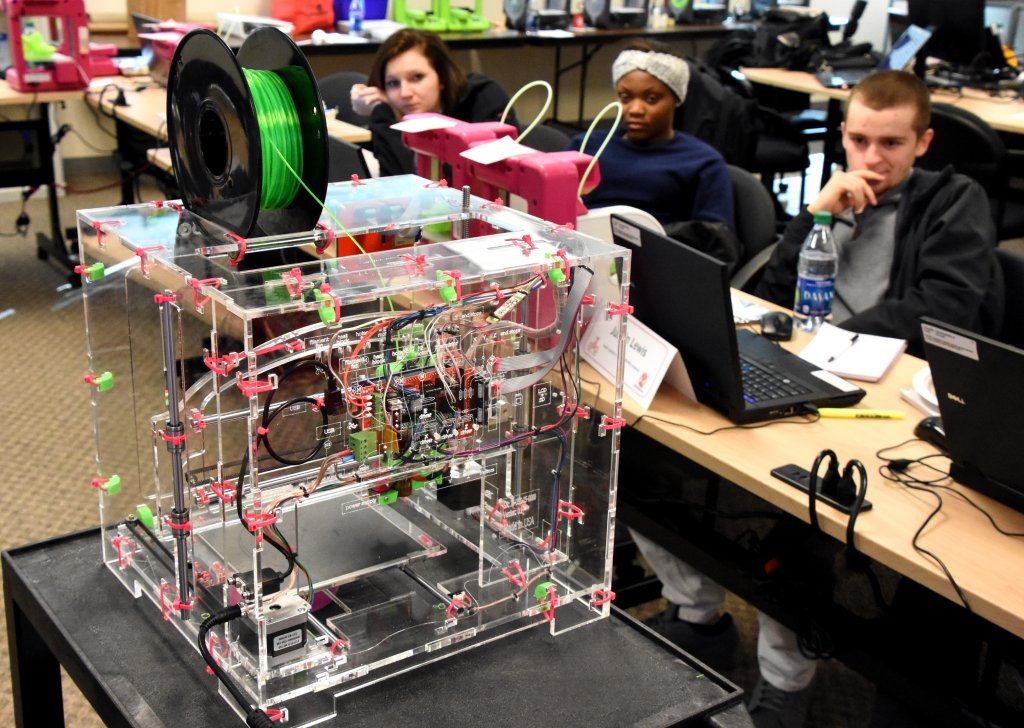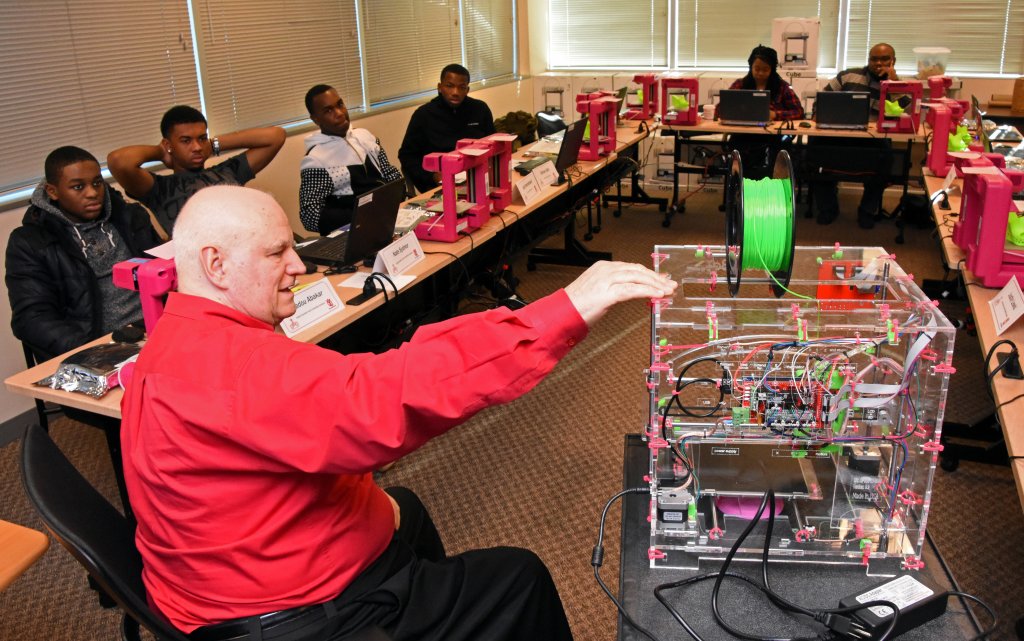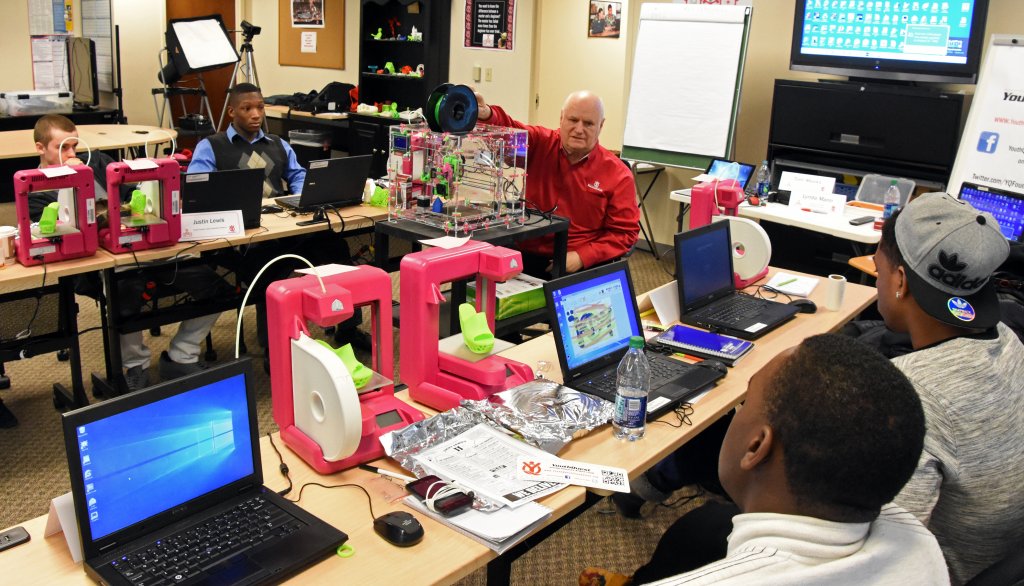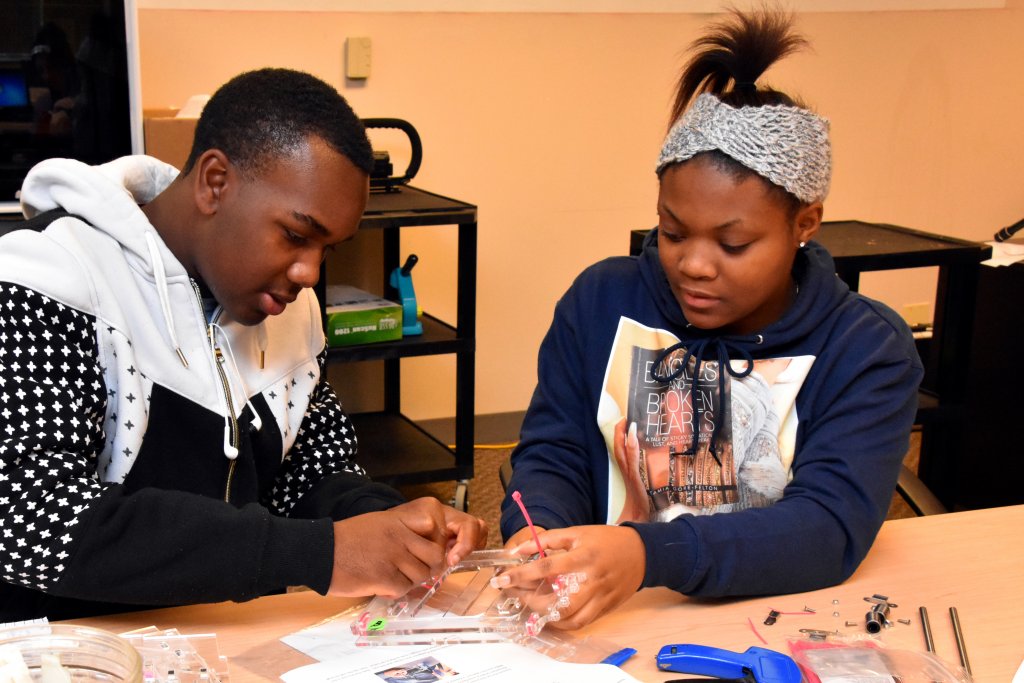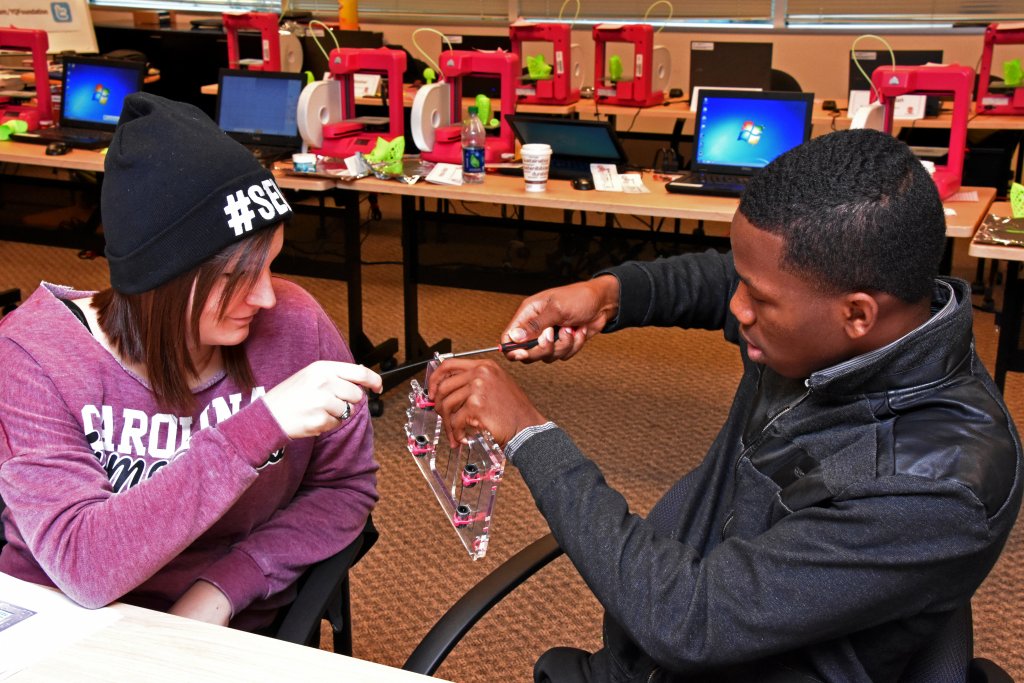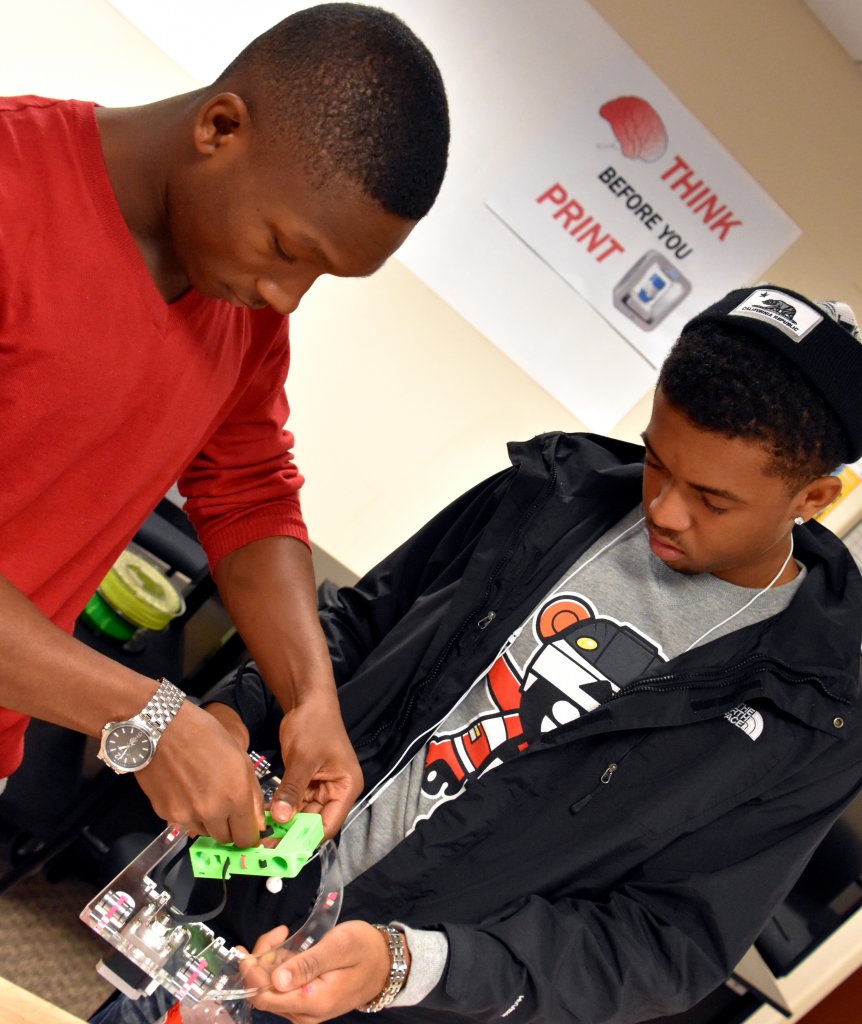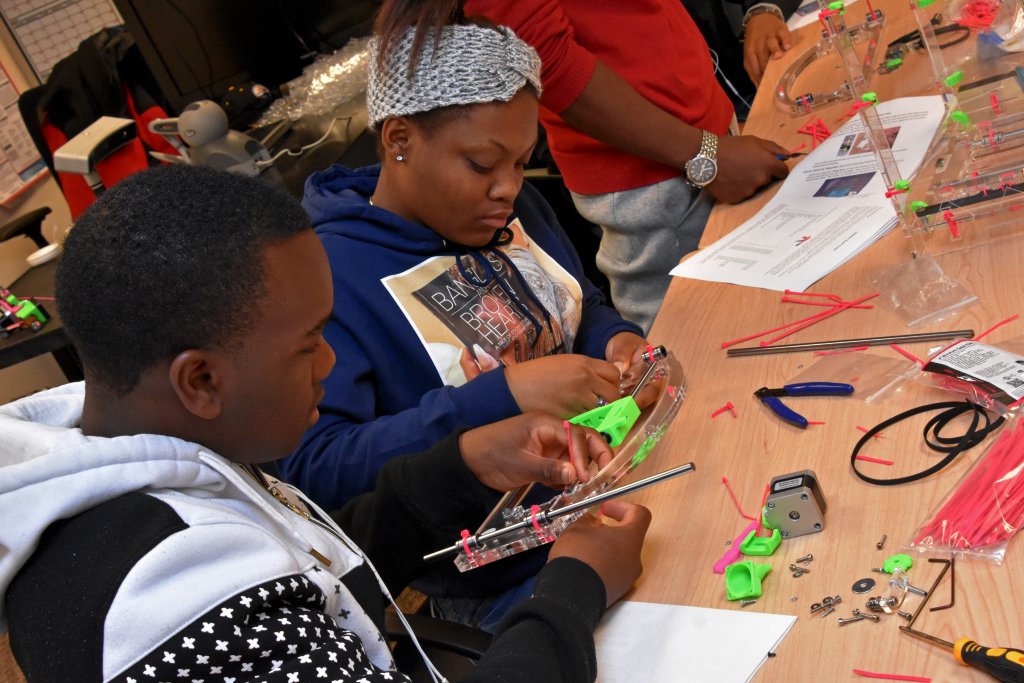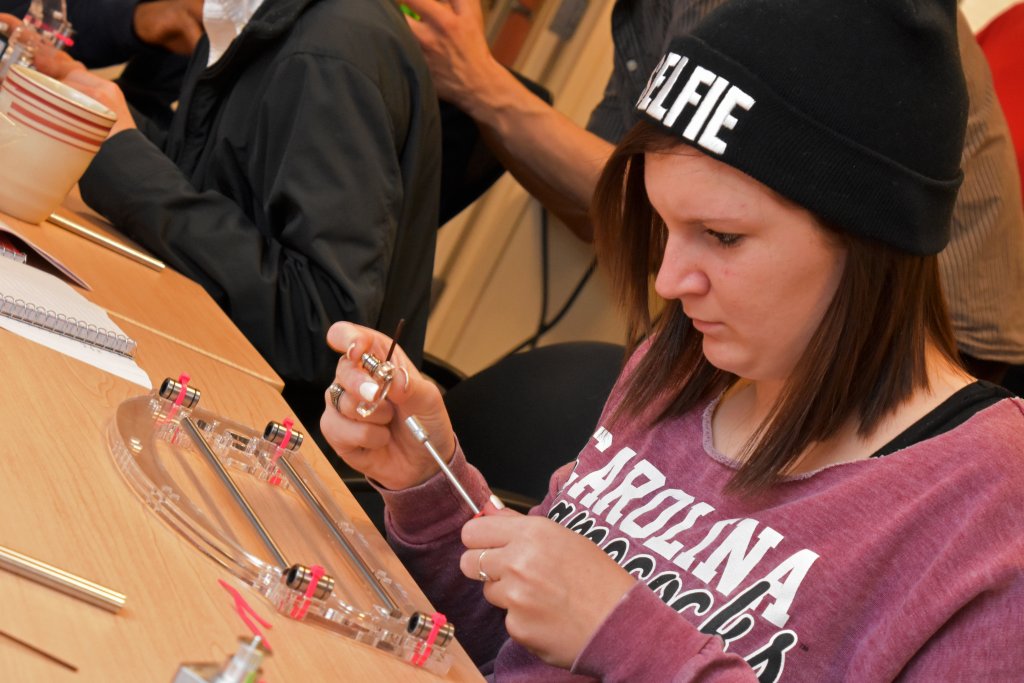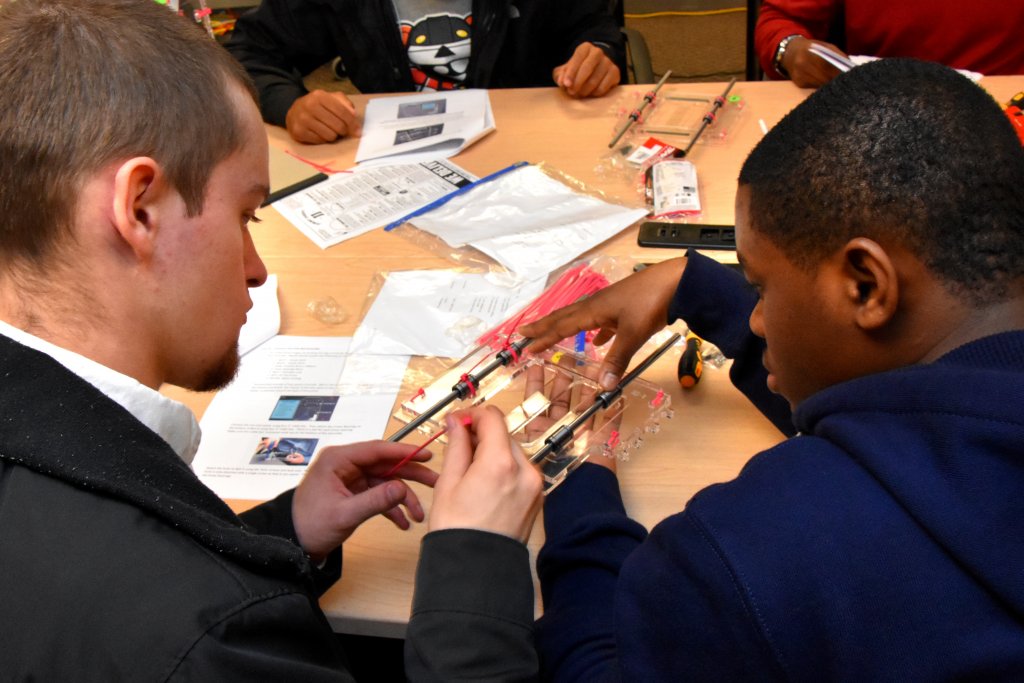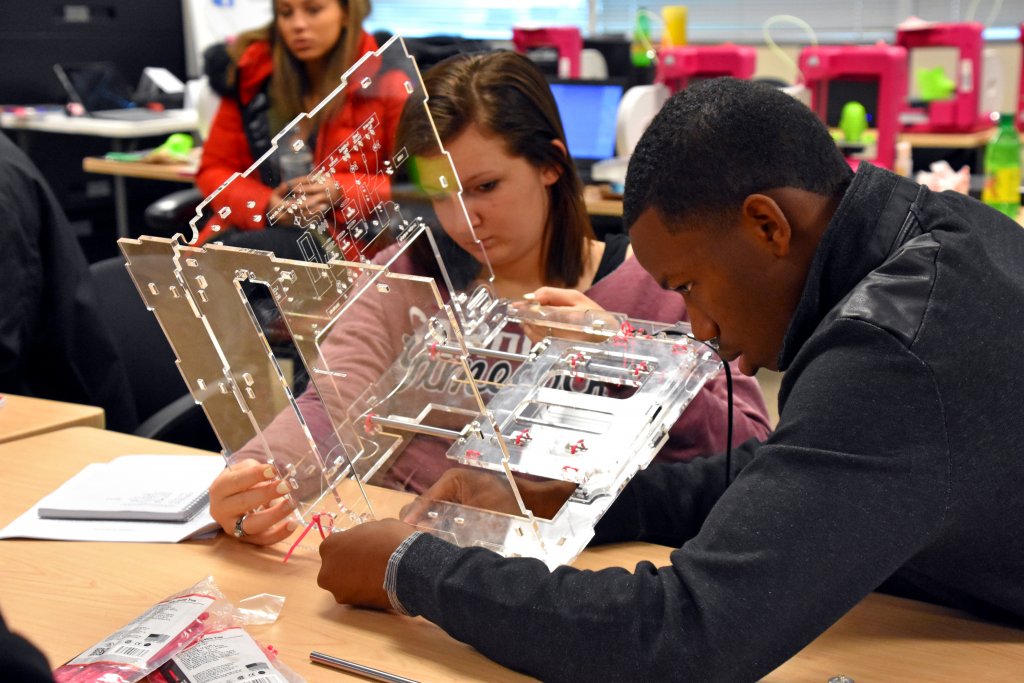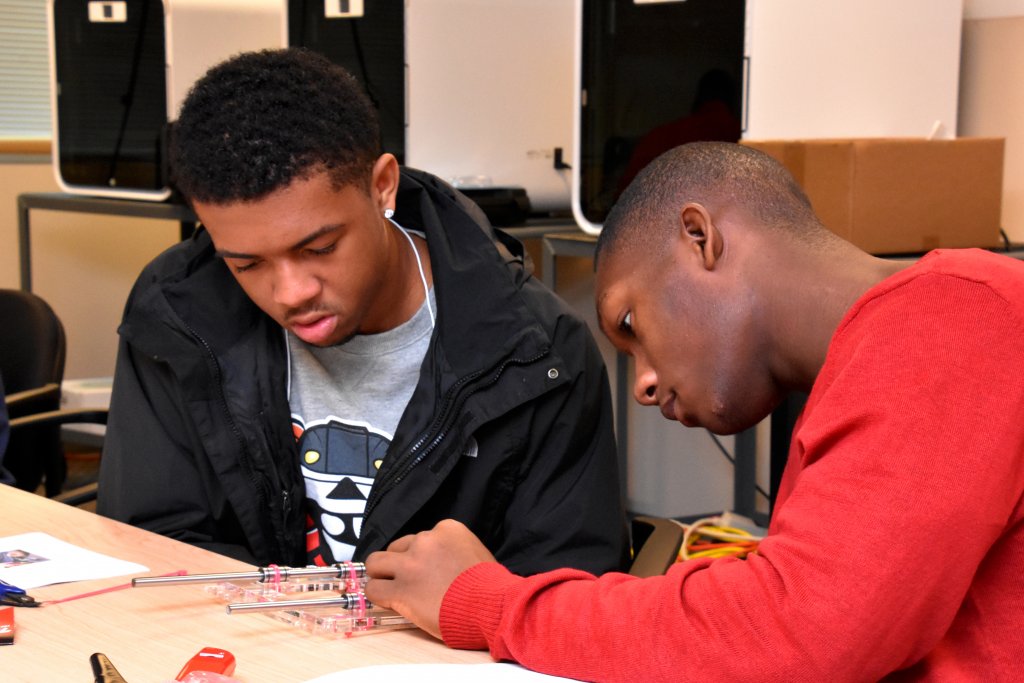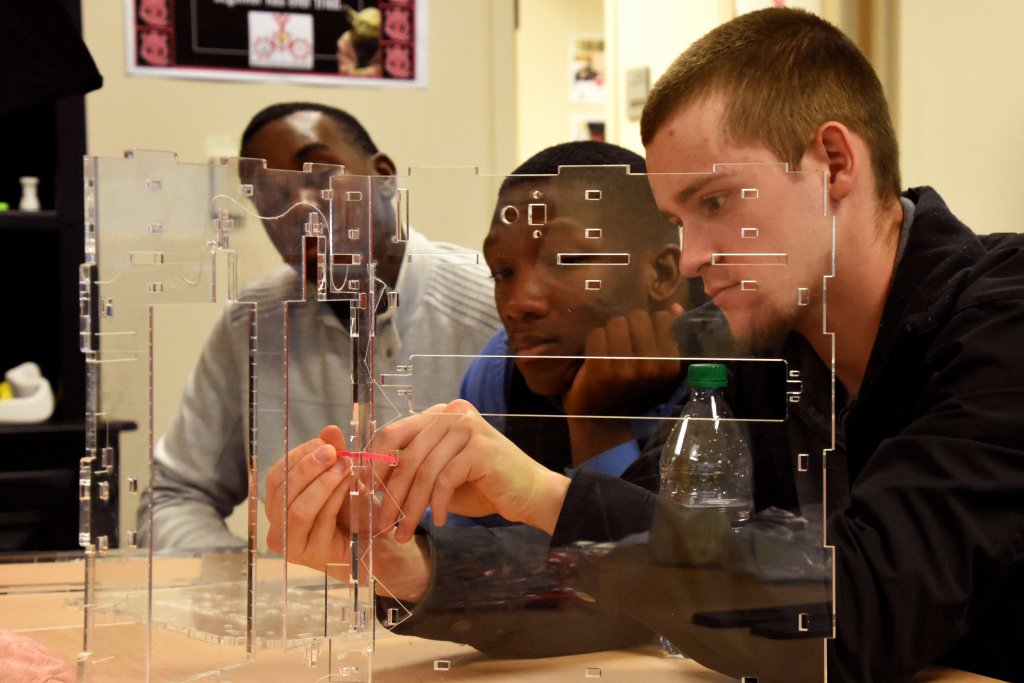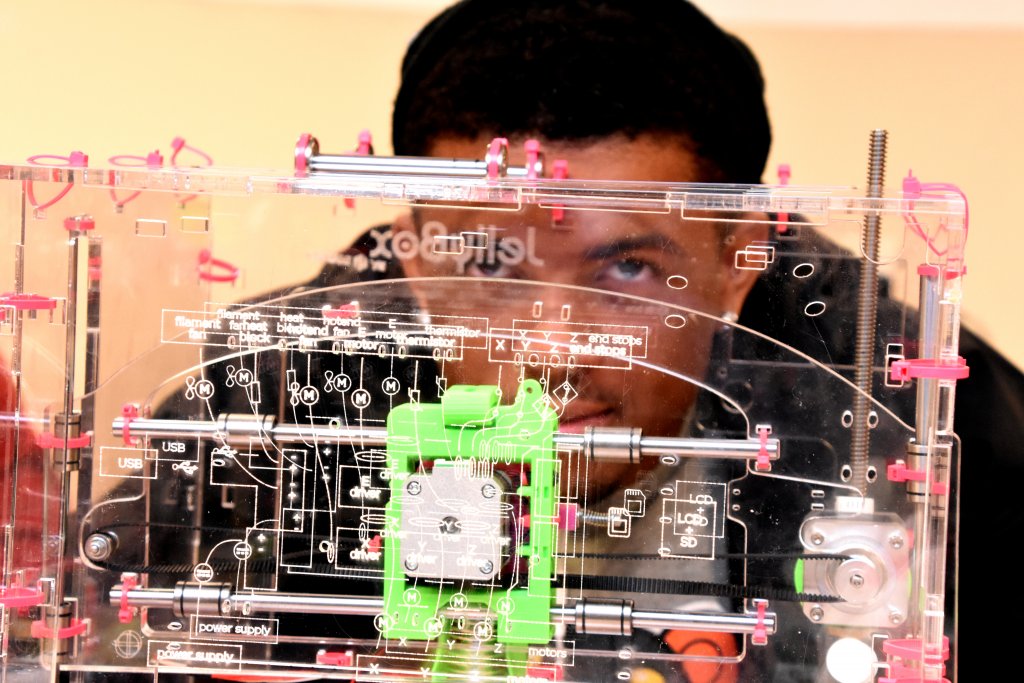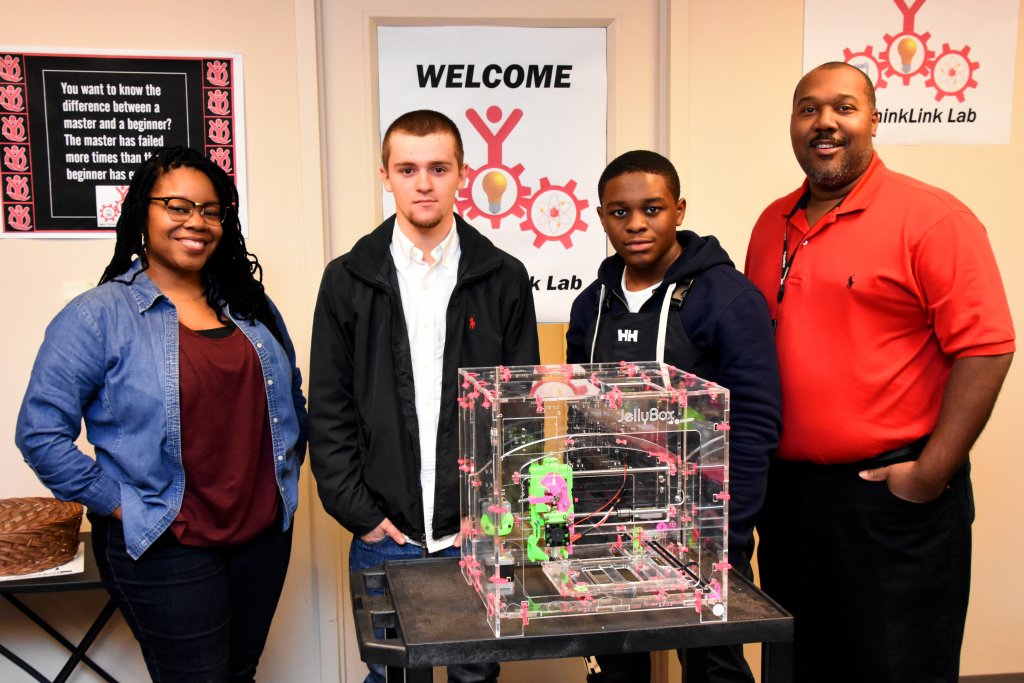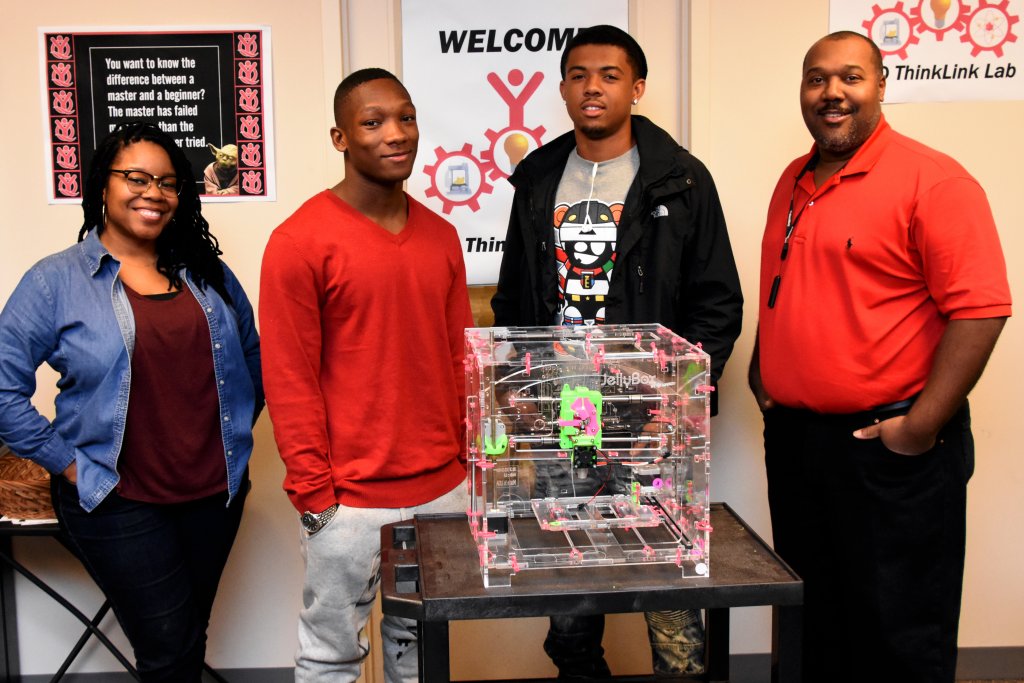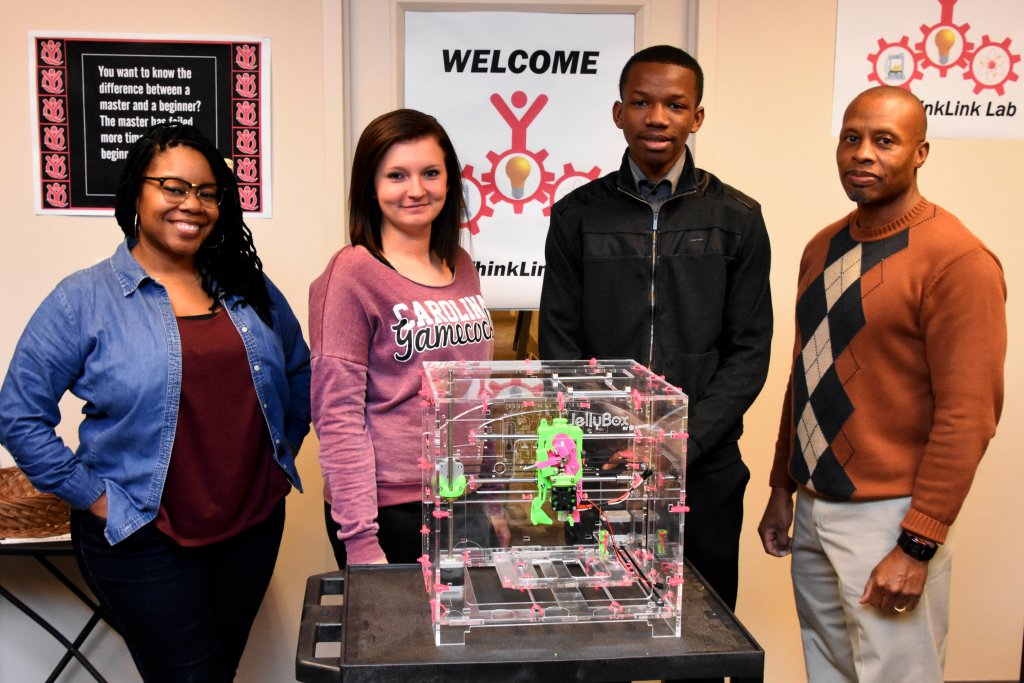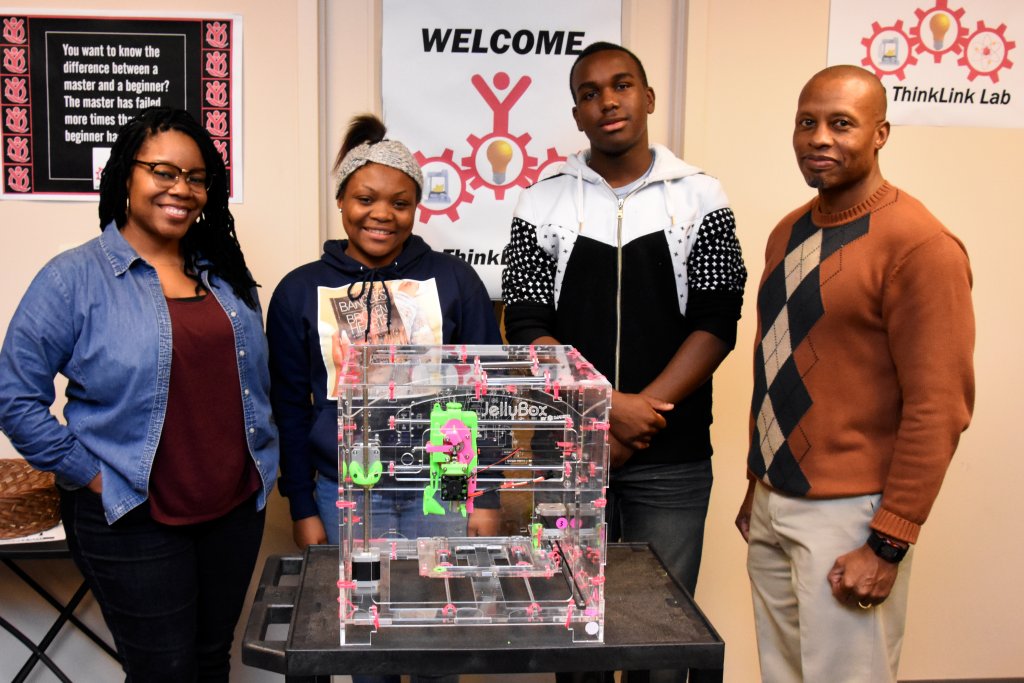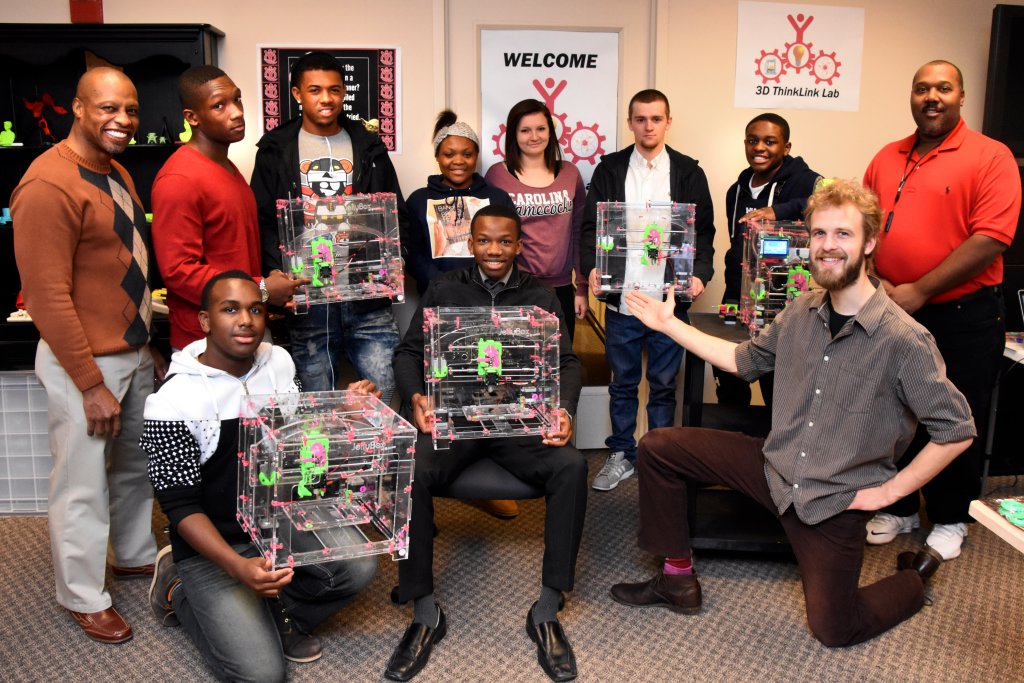Eight young people who spent a week in our 3D ThinkLink Creativity Lab this month learned new skills and took part in hands-on research that will benefit other 3D printing enthusiasts.
“Not only did our students broaden their 3D design and printing experience by exploring the complexities of full-color 3D printing workflows, they provided valuable early feedback for the developers and manufacturers of two new 3D technologies,” said YouthQuest Director of Instruction Tom Meeks.
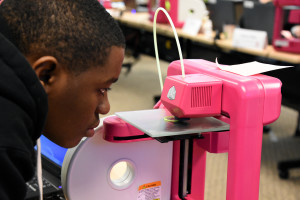
They were selected for Lab Week because of their outstanding performance in the latest cycle of 3D ThinkLink classes at National Guard Youth ChalleNGe Academies serving South Carolina, Maryland and the District of Columbia. YouthQuest provides the equipment, curriculum and training for the residential academies to help at-risk teens develop critical thinking and problem solving skills through 3D design and printing.
It was the largest group so far to receive 40 hours of advanced training in our Chantilly, Virginia, facility. Unlike the typical maker space, the 3D ThinkLink Creativity Lab is dedicated solely to 3D design, scanning and printing. It is a true laboratory environment designed to promote comparative analysis and develop creative solutions.
The students were the first to experience the lab’s new 3D scanning and printing capabilities, and the first to assemble a unique 3D printer kit.
Going With the Workflow
The week began with an introduction to Cubify Sculpt, a type of 3D design software the students had never tried.
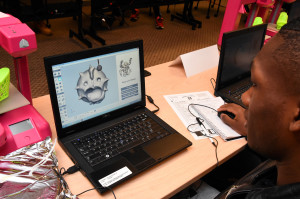
In their classes at school, they used Moment of Inspiration (MoI), a CAD (Computer-Aided Design) program that turns two-dimensional shapes into three-dimensional objects. Sculpt is an organic modeling program in which the students begin with a 3D object and modify it in all sorts of creative ways, as if digitally sculpting a piece of virtual clay.
Step-by-step, they worked their way through the process of designing simple objects such as personalized rings using MoI and Sculpt. Now that every lab workstation is equipped with a Cube 2 printer – thanks to a generous donation from our strategic partner, 3D Systems – it was easy for the students to run test prints so they could quickly evaluate and improve their designs.
“As I began making the images and creating stuff I started to realize that this is a game-changer. It was amazing to me because I never even worked with this type of material before,” said South Carolina Youth ChalleNGe Academy (SCYCA) graduate John Smith. “It helped me realize my passion for art and my talent is there … and I can use it to help other people.”
Once they got a feel for organic modeling, the students took turns making 3D scans of each other and learned how Sculpt fits into the workflow of preparing the files for printing. Then they were able to create full-color mini-busts of themselves using the lab’s recently acquired Z450 powder bed printer.
Evaluating 3D Scanners
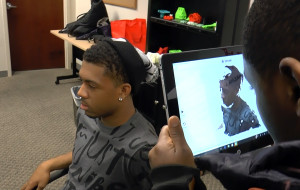
The students tested and evaluated two kinds of handheld 3D scanning devices: the 3D Systems Sense and an HP tablet with Intel’s RealSense technology.
They experimented with various scanning techniques and lighting conditions, then conducted a focus group with Tom to discuss their findings.
They found the tablet was easier to use than the Sense, which has no onboard monitor and must be connected to a computer by a cumbersome cable. However, they noted that both devices had trouble capturing images of dark-skinned people.
“Scanning can be aggravating when it messes up and you have to redo it, but it’s still really fun,” said SCYCA grad Emilee Bray.
“It’s cool to have a 3D figure of yourself,” she added. “Nobody I know has that kind of stuff!”
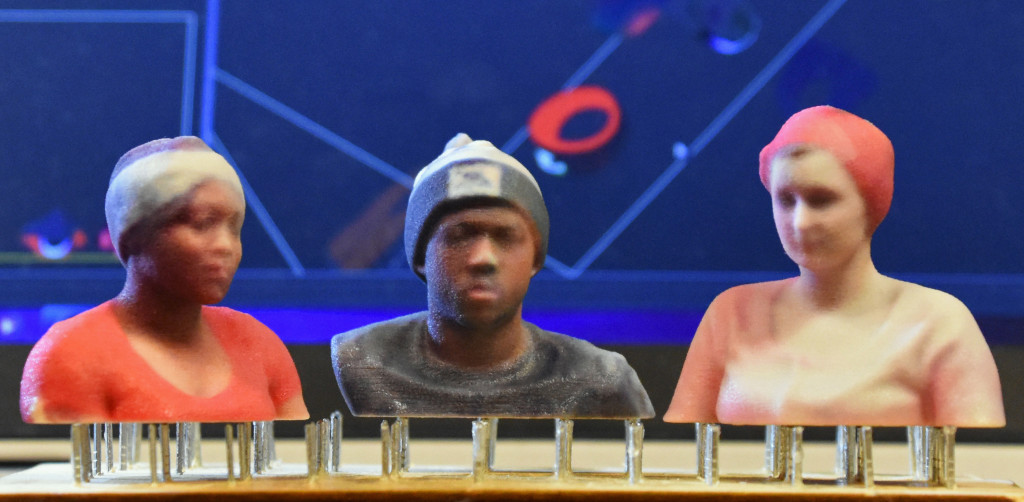
The group had several ideas for simplifying the workflow and suggested improvements in the RealSense software’s visual feedback to help users hold the tablet at the proper distance from subjects while scanning.
Their feedback is being shared with the leaders of the Sense for Intel RealSense application development team at 3D Systems.
Assembling 3D Printers
The JellyBox, from iMade3D, is a soon-to-be-released 3D printer kit designed specifically for educational use. Its innovative design makes it easy to put together and take apart so it can be used over and over to teach students how a 3D printer works.
The students paired up to do the first independent evaluation of the JellyBox assembly process. Members of the iMade3D team spent a full day in the lab watching them put together four printers.
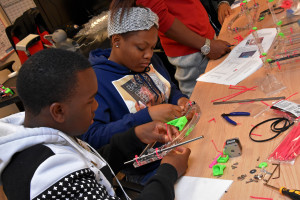
“It was fun. I mean, we messed up several times, but we still finished in a day,” said SCYCA’s Justin Lewis.
“And for every mistake, we learned from it,” added Amadou Abakar, from DC’s Capital Guardian Youth ChalleNGe Academy (CGYCA).
The students had a finished JellyBox to look at, but were given minimal instructions. At first, they all thought it would be difficult to assemble their kits, but the teams quickly gained confidence as they figured out how to put the pieces together.
Kimora Felton from SCYCA was so wrapped up in the project that when it was time for lunch, she didn’t want to stop working.
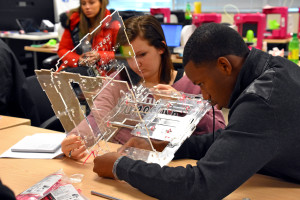
“I really love making stuff,” she explained. “When something really interests me, I go straight for it.”
“I was really impressed and I loved the energy and the attention the students devoted to the project,” said Filip Goc, the JellyBox’s primary designer, noting that their feedback will be invaluable in perfecting the design and refining the assembly instructions before the product goes on the market.
Osman Bah from Maryland’s Freestate ChalleNGe Academy called the experience “amazing.” He said he’d never expected to meet an inventor like Filip and “see how his mind works.”
“The advice he gave me was to just follow the steps and put your mind to it,” Osman recalled.
“A Life-Changing Experience”
A week of immersion training in our lab taught the students some lessons in life, along with advanced 3D skills.
“I learned how to work with people that I don’t know. I usually don’t like doing that,” said Emilee, who teamed up with Osman to build a JellyBox. “It was interesting getting to know someone while working on a project with them.”
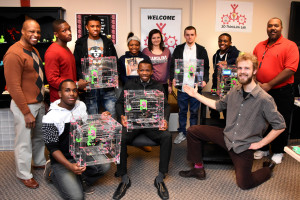
She discovered that even though they’re from different states and have “a different perspective on everything,” they could put their minds together.
“It did get aggravating at times, but we still worked through it and we still made it,” she said.
“I was proud of us because we worked hard on that thing. We never quit,” added Emilee, who went directly from Lab Week to South Carolina’s Aiken Technical College – the next step in her plan to become a nurse anesthetist.
John, who impressed everyone in the lab with his design talents described our 3D ThinkLink training as “a life-changing experience” that’s given him new skills and tools to help him pursue a career in art.
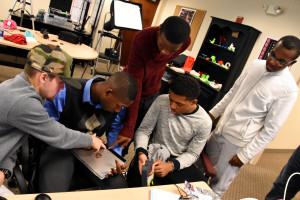
“Being involved in 3D ThinkLink makes me think about the different opportunities I have. Being here gives you a better chance of going somewhere, for example, college or getting a job,” agreed Josh Nembhard, a Freestate grad who plans to study visual design.
Nate Sydnor from CGYCA also said the experience fueled his passion for art by helping him see things in different ways. In addition, he found it rewarding to participate in the scanning and JellyBox research.
“I can look back on this and say I accomplished something great because we are a part of history. We’re making history,” Nate said.
“I’m involved in something that’s going to impact a lot of people in the future. It makes me feel inspired and motivated,” Osman added.
Amadou, who aspires to be an electrical engineer, recalled that on the first day of Lab Week, the students talked about the aphorism that a koi fish grows bigger when it swims in a larger pond.
“This has been a really big pond for us to grow and learn and develop,” he said. “And this is really important because this isn’t something we’re going to leave here. It’s something we can take with us wherever we go.”
CLICK BELOW TO SEE PHOTO GALLERY
